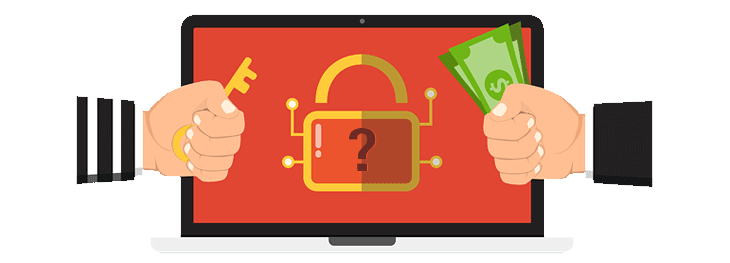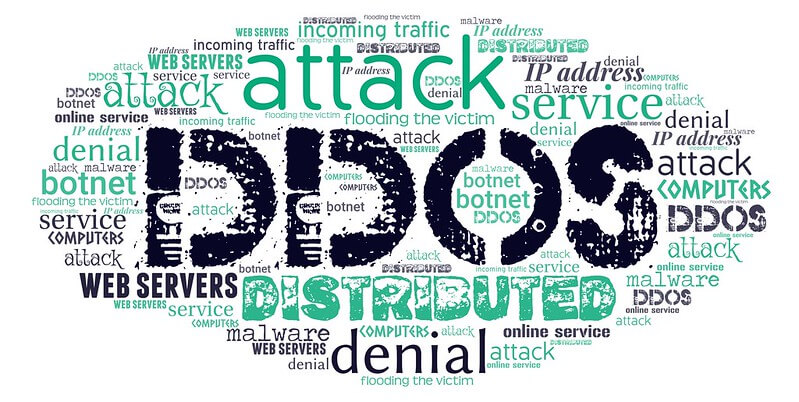What is a ransomware attack?
A ransomware attack is a common method used to get ransom across the Internet. It is a cyber attack that immediately denies access to a target user’s files, applications, database and other valuable information until the victim pays the ransom.
Ransomware specifically targets user files and avoids destroying system files. On one hand, it ensures that users will be notified of attacks on their files. On the other hand, users will be able to pay a ransom to get their files back. Ransomware is usually spread via exploit kits, watering hole attacks, malicious ads or phishing emails.
Why is ransomware still widespread?
Ransomware can be spread to thousands of computers without causing any more cost. If a small number of these victims pay ransoms, the criminals will receive considerable revenue. Moreover, they run low risks of creating and distributing ransomware.
Cyber attacks often originate and spread from countries that do not have a strict stance on these crimes. In fact, many of these countries may have made a profit from it. It is hard to prosecute these cybercriminals because ransoms are often paid in untraceable methods, such as cryptocurrency.

In short, ransomware continues to spread. As long as systems and users are vulnerable, cybercriminals will continue to distribute ransomware. They can easily spread ransomware to a large number of targets and get a lot of ransoms.
Ransomware never goes away. It was first discovered in the 1980s and has been evolving ever since.
Why is ransomware difficult to deal with?
Unlike other cyberthreats, ransomware tells victims who they are. When a user’s device is infected by ransomware, it is widely believed that paying the ransom is the most cost-effective way to recover data. But unlike other attacks where the attacker only wants access to data or resources, blackmailers sometimes want both data and money. This is why, in many cases, victims are defrauded of money but do not get their data back.

What’s more embarrassing is that the ransoms paid are often used directly to develop the next generation of ransomware. And because of that, ransomware attacks are developing at an alarming speed, and ransomware families are evolving.
Ransomware is also particularly cunning so that it can spread quickly across the Internet. In recent years, it has become a common threat to Internet users due to frequently exposed vulnerabilities on mobile devices and the Internet of Things (IoT) and evolved phishing and social engineering.
7 ways to prevent ransomware
There are many ways to perform a ransomware attack, but the most commonly used method is phishing emails. The user may easily get infected by the ransomware without knowing what they are doing. Although training can reduce the risk, it cannot completely protect a user from falling a victim to ransomware attacks. Anyone can make mistakes. Because ransomware is constantly changing, a single system or process is not always able to deal with it.
Best defenses against ransomware start with frequent backups. Another increasingly feasible option is to store all data in the cloud. So if a computer is infected with ransomware, the user can simply restore the computer to factory settings without losing a byte of data.
Since individuals, enterprises and research institutions can all be targeted by ransomware attacks, you’d better learn how to protect yourself from them.
- Raise your awareness of data security.
Continuous security training for Internet users is very necessary. Users should familiar with the spread method of ransomware, such as social media, social engineering, unknown websites, unknown download sources, spam and phishing emails. Through case studies, users will be sensitive to potential risks.
- Keep yourself away from phishing emails.
The phishing email is the main way of ransomware distribution. Users should not open phishing emails and click on malicious links. In addition, relevant email protection should be taken to secure your email and sensitive data.
- Adopt multi-layer protection.
Since a lot of ransomware combines with more complex cyber attacks, simple and single layer protection can’t ensure the safety of user data. Users should shield themselves from advanced cyber attacks with multi-layer protection, including advanced threat protection, gateway anti-virus, intrusion protection and other ways based on network security protection.
- Use anti-virus software and a firewall.
Ransomware can easily be brought into your device if there isn’t any protection. Thus, you should protect your devices with anti-virus software and a firewall. Besides, other methods can also be taken to secure your devices, including web content filtering, patch management and more security tools such as virtual private networks (VPN).
- Network isolation.
Nowadays, ransomware can be spread through LAN. In order to prevent the spread of ransomware, effective network isolation measures should be taken to isolate important files, applications, databases and other information into a separate network to prevent infection from the network.
- Data backup and recovery.
Data backups can reduce the loss caused by ransomware attacks. But these data backups should also be protected against malware infection and damage. Here are two main methods of backup:

Public cloud
The easiest precaution is to back up your data in cloud. A public cloud like Google Drive and OneDrive offer gigabytes of free storage in the cloud which is enough for individuals.
Paid cloud
If you have concerns about the security of the public cloud, then you can use cloud hosting solutions like Acronis. These programs are similar to Google Drive, providing fast and reliable file storage, as well as a personal support service that lets users choose where to store their files. Compared with free public cloud storage, this type of cloud storage solution helps you solve the problem even if something happens.
- Monitor encrypted network traffic.
More and more web services are encrypted by SSL/TLS. If ransomware spreads through encrypted web services, it can bypass the traditional protection measures. Therefore, protection that supports SSL monitoring must be taken to detect if there is any threat in SSL encrypted communications.






